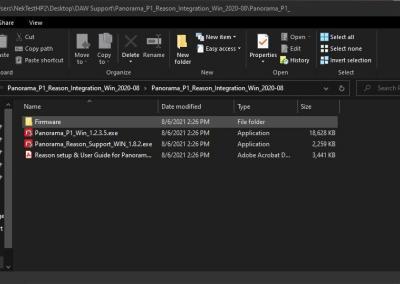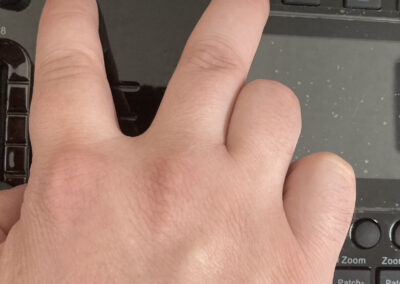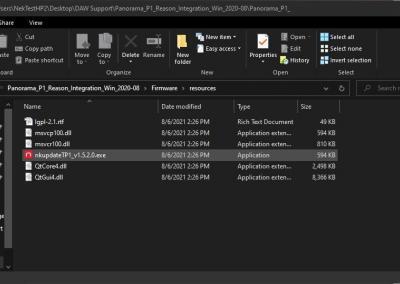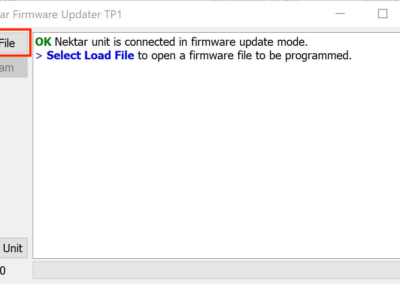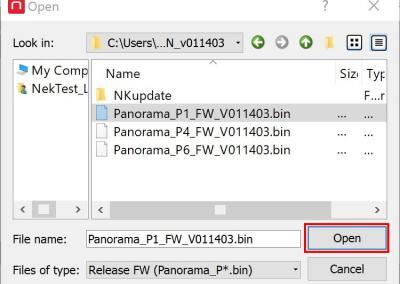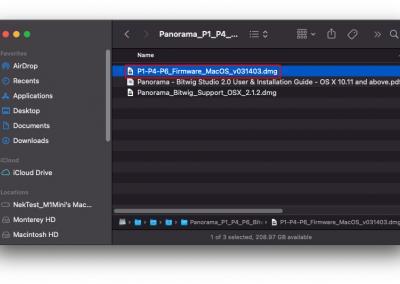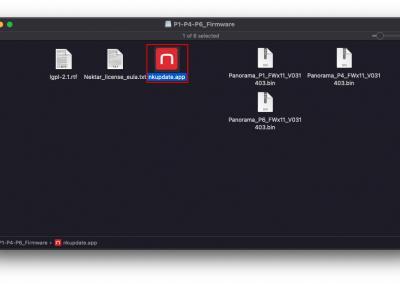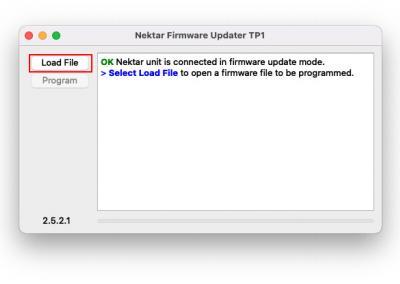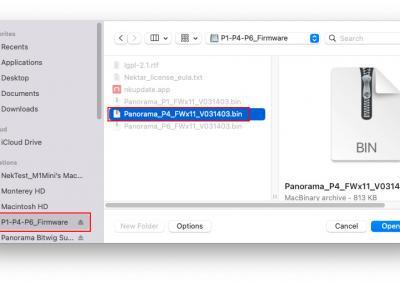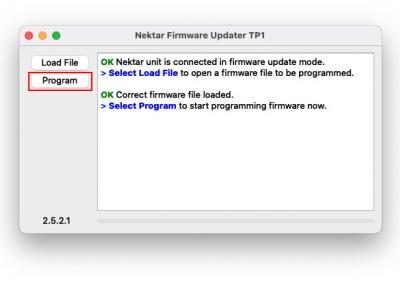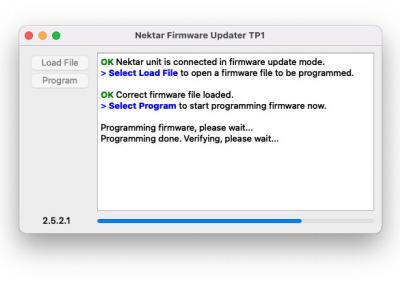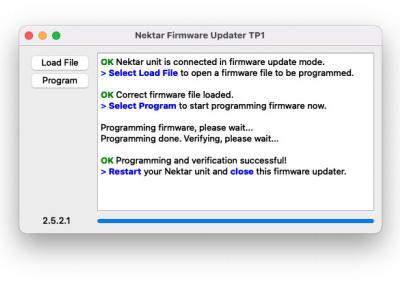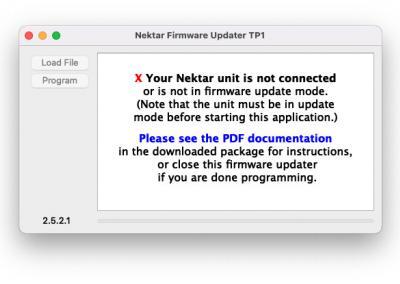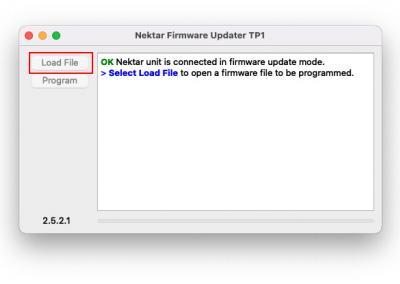Updating Firmware and Getting Started: Panorama P Series
For T4/T6 firmware update instructions, please follow the instructions on this page: Updating Firmware and Getting Started: Panorama T Series
Windows Instructions
After extracting the DAW support package (as shown in images 1 and 2) which you downloaded from your Nektar account, you will find a folder called ‘Firmware’ inside. This folder contains the files needed to update your Nektar device’s operating system.
- Start your controller in update mode. To do so, hold the [Mixer] and [Toggle/View] buttons when turning the controller on. The display will be blank. (Image 3)
- Start nkupdate. You will find nkupdateTP1_v1.5.2.0.exe inside the NKupdate folder. (Image 4)
- The firmware update app nkupdate should now say “OK Nektar unit is connected in firmware update mode”. (Image 5)
- Click the ‘Load’ button in nkupdate. (Image 5)
- Find the file named ‘Panorama_P*_FW_….bin’. (* represents 1, 4 or 6, depending on the model you are using). (Image 6)
- Select the firmware and click ‘Open’. The updater window will report “OK Correct firmware file loaded”. (Image 7)
- Click the ‘Program’ button to begin the update process. Once complete, you get the message “OK Programming and verification successful!” (Image 8)
- Close the firmware updater app.
If this is your first time updating the controller’s firmware, please restore the default settings.
- Turn the controller off.
- Hold the [Patch-] and [Patch+] buttons while turning the controller back on.
- After a moment, a message will appear which indicates that the default settings are being restored.
- Release the [Patch-] and [Patch+] buttons.
MacOS Instructions
When you open the DAW support package which you downloaded from your Nektar account, you will find a disk image called ‘P1-P4-P6_Firmware.dmg’ inside. This disk image contains the files needed to update your Nektar device’s operating system. (Images 1 and 2)
- Start Panorama in update mode. To do so, hold the [Mixer] and [Toggle/View] buttons when turning the controller on. The display will be blank. (Image 3)
- Start nkupdate.
- The firmware update app nkupdate should now say “OK Nektar unit is connected in firmware update mode”. (Image 4)
- Click the Load button in nkupdate. (Image 4)
- In the Finder window that appears you will see ’P1-P4-P6_Firmware’ listed under Locations, in the Side Bar. Select that, so you can see the firmware files. Find the file named ‘Panorama_P*_FW_….bin’. (* represents 1, 4 or 6, depending on the model you are using). (Image 5)
- Select the firmware file and click ‘Open’.
- The updater window will report “OK Correct firmware file loaded”. (Image 6)
- Click ‘Program’ button to begin the update process. (Image 7) Once complete, you should get the message “OK Programming and verification successful!”. (Image 8)
- Close the firmware updater app. (Image 9)
If this is your first time updating the controller’s firmware, please restore the default settings.
- Turn the controller off power off. Hold the [Patch-] and [Patch+] buttons while turning the controller back on.
- After a moment, a message will appear which indicates that the default settings are being restored.
- Release the [Patch-] and [Patch+] buttons.
Troubleshooting
Check the current Firmware Version:
- Press the [Internal] button.
- Hold the display buttons labeled ‘Faders’ and ‘Encoders’ for a moment, until the About page appears.
- The firmware version will be shown on this page.
The ‘Load’ button is greyed out:
- Quit nkupdate.
- Turn the controller OFF.
- Start the controller in update mode – as detailed in earlier instructions.
- Open nkupdate again.
Possible warnings and error messages:
“X Wrong firmware file for the connected Nektar product.”
Make sure you selected the correct firmware file, during the ‘Load’ process.
“Are you sure you want to program this firmware?”
This message appears if you have selected firmware for the correct series but a different model (for example, if you are trying to program a P4 with P6 firmware). You can do so, but proceed with caution. This will have an impact on the way the device is detected by DAW applications.


